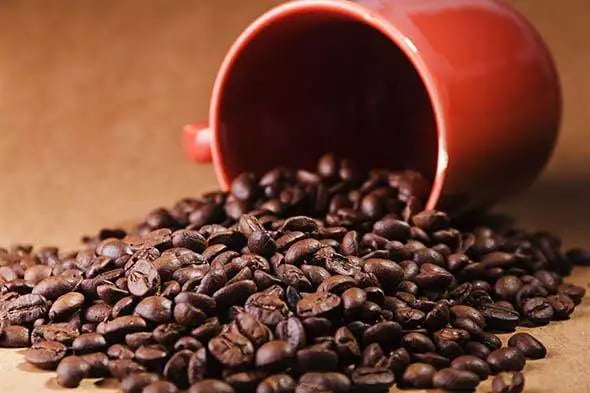
Dyeing hair with coffee is a natural and eco-friendly alternative for those looking to add a subtle tint or depth to their hair color without using harsh chemical dyes. Coffee can infuse hair with a rich, warm tone, particularly beneficial for brunettes or those with dark hair. This step-by-step guide will walk you through the process of dyeing your hair with coffee in the comfort of your own home.
How to Dye Your Hair with Coffee
What You’ll Need:
- Coffee Grounds: You’ll need a few tablespoons of coffee grounds. Freshly brewed coffee can work, too, but coffee grounds are generally more effective.
- Conditioner: Use a generous amount of your regular hair conditioner.
- Shower Cap or Plastic Wrap: To keep the mixture in place while it sets.
- Gloves: To protect your hands from staining.
- Bowl: For mixing the coffee and conditioner.
- Spoon: To stir the mixture.
- Old Towel and Old T-Shirt: Wear clothing you don’t mind staining, and use a towel to catch any drips.
Step-by-Step Instructions
1. Brew the Coffee
Start by brewing a strong cup of coffee using coffee grounds. Allow it to cool completely before using it in the dyeing process. The stronger the coffee, the richer the color will be.
2. Prepare the Mixture
In a bowl, mix the coffee grounds with a generous amount of hair conditioner. The exact amount may vary depending on your hair’s length and thickness, but a 1:1 ratio of coffee grounds to conditioner is a good starting point. Stir until you achieve a smooth, paste-like consistency.
3. Wear Protective Gear
Put on old clothing, don gloves to protect your hands, and place an old towel around your shoulders to prevent any accidental spills or drips.
4. Apply the Mixture
Apply the coffee and conditioner mixture to your hair. Start at the roots and work your way down to the tips. Make sure you saturate your hair thoroughly, covering all strands for even coloring.
5. Secure Your Hair
Once your hair is coated, use a shower cap or plastic wrap to keep your hair in place. This helps to lock in the moisture and heat, enhancing the color-setting process. Leave it on for at least an hour, but for more intense color, you can leave it on for longer.
6. Rinse and Wash
After the desired time has passed, rinse your hair thoroughly with cool water. Do not use shampoo, as it may strip the color. If you want to maintain the color, you can use a color-safe conditioner.
7. Enjoy Your New Coffee-Dyed Hair
Gently towel dry your hair and style it as usual. You’ll notice a subtle, warm brown tint that coffee dye imparts to your hair. This method is semi-permanent, so the color will gradually fade with each wash, allowing you to enjoy a natural and temporary change in hair color.
Tips and Notes
- The results may vary depending on your natural hair color. Coffee dye works best on lighter hair shades, adding warmth and depth. It may not have a significant impact on very dark hair.
- Experiment with the coffee-to-conditioner ratio to achieve your desired shade. Stronger coffee mixtures will result in a darker color.
- If you have allergies or sensitive skin, perform a patch test before applying the mixture to your hair to ensure you don’t have any adverse reactions.
FAQs About Dyeing Hair with Coffee
Here are some frequently asked questions about using coffee as a hair dye and detailed answers to guide you through the process:
1. Does coffee really dye hair?
Yes, coffee can temporarily dye hair, especially if you have dark hair. It won’t dramatically change the color but can add depth and shine, making it a subtle and natural alternative to chemical hair dyes.
2. What type of coffee works best for dyeing hair?
Freshly brewed coffee is ideal for dyeing hair. Use a strong brew with coffee grounds to get the best results. Espresso or dark roast coffee tends to give a more noticeable color.
3. Can I use instant coffee for this process?
While freshly brewed coffee is recommended, you can use instant coffee as an alternative. Dissolve a few tablespoons of instant coffee in hot water to create a strong coffee mix.
4. How long does the coffee dye last in the hair?
The color from a coffee dye will typically last for a few washes, gradually fading each time you shampoo your hair. It’s a semi-permanent solution, so the intensity of the color will diminish over time.
5. Will coffee dye work on all hair colors?
Coffee dye works best on darker hair colors, such as brown and black. It may not show a significant difference on very light or blonde hair.
6. Can I use coffee to cover gray hair?
Yes, coffee can help darken and blend gray hair with your natural hair color. It provides a subtle and natural coverage for gray hair.
7. Is this process suitable for all hair types?
Yes, dyeing your hair with coffee is suitable for all hair types. However, individuals with dry hair may want to ensure they follow up with a deep conditioning treatment to prevent any potential dryness.
8. How often can I dye my hair with coffee?
Since coffee is a gentle and natural dye, you can use it as often as you like. Some people incorporate coffee rinses into their weekly hair care routine to maintain the color.
9. Will the coffee smell stay in my hair?
The coffee smell may linger initially, but it will fade as your hair dries. If the smell persists, you can use a scented conditioner to help mask it.
10. Can I mix other ingredients with coffee to enhance the effect?
Yes, you can experiment with adding ingredients like cinnamon, cocoa powder, or coconut oil to the coffee mixture to potentially enhance the color or conditioning effects. However, be cautious and conduct a patch test to ensure no adverse reactions.
Wrap Up
The use of coffee as a hair dye is a procedure that is both natural and delicate, and it produces a hue that only lasts temporarily. Before applying it to your complete head of hair, it is recommended that you perform a strand test to determine how the product will react with your natural hair color and texture. It is crucial to note that the impact may vary based on these factors, so it is important to keep this in mind. I hope you like your new locks, which have a soft tinge to them!

Leave a Reply